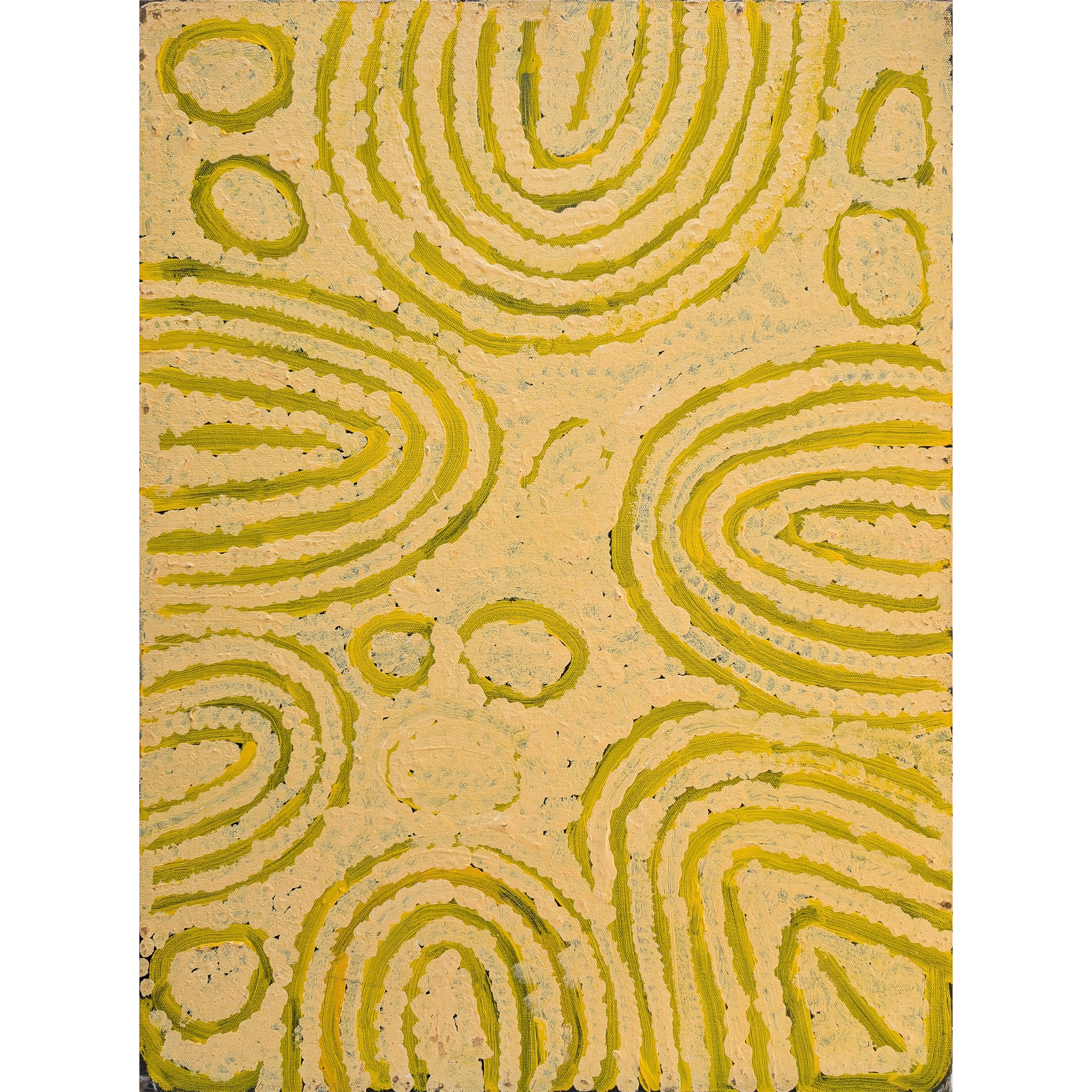
Artist: Naata Nungurrayi | Title: Women's Site | Year: 2003 | Medium: synthetic polymer paint on canvas | Dimensions: 61 x 45 cm
PROVENANCE
Ngintaka Arts, Alice Springs
ARTWORK STORY
This painting depicts designs associated with the rockhole site of Marrapinti, to the west of the Kiwirrkura Community. A large group of senior women camped at this rockhole making the nose-bones, also known as Marrapinti, which are worn through a hole in the nose-web. These nose-bones were originally won by both men and women but are now only worn by the older generation on ceremonial occasions. The women later travelled east passing through the Kiwirrkura area. The arcs represent sandhills surrounding the site.
Artist Profile
COMMUNITY/REGION
Kiwikurra, WA /Kintore NT
LANGUAGE
Pintupi
BIOGRAPHY
Born at Kumilnga, west of the Pollock Hills in Western Australia, Naata Nungurrayi was about 30 years of age when she encountered the welfare patrol in 1963 and was brought with her family to Papunya the flowing year. Forced to leave behind her beloved desert homelands, the memory of these places and the life she led there continues to provide the wellspring of her inspiration and the subject matter for her highly sought after paintings… Continue Reading
PROVENANCE
Ngintaka Arts, Alice Springs
ARTWORK STORY
This painting depicts designs associated with the rockhole site of Marrapinti, to the west of the Kiwirrkura Community. A large group of senior women camped at this rockhole making the nose-bones, also known as Marrapinti, which are worn through a hole in the nose-web. These nose-bones were originally won by both men and women but are now only worn by the older generation on ceremonial occasions. The women later travelled east passing through the Kiwirrkura area. The arcs represent sandhills surrounding the site.
Artist Profile
COMMUNITY/REGION
Kiwikurra, WA /Kintore NT
LANGUAGE
Pintupi
BIOGRAPHY
Born at Kumilnga, west of the Pollock Hills in Western Australia, Naata Nungurrayi was about 30 years of age when she encountered the welfare patrol in 1963 and was brought with her family to Papunya the flowing year. Forced to leave behind her beloved desert homelands, the memory of these places and the life she led there continues to provide the wellspring of her inspiration and the subject matter for her highly sought after paintings… Continue Reading

